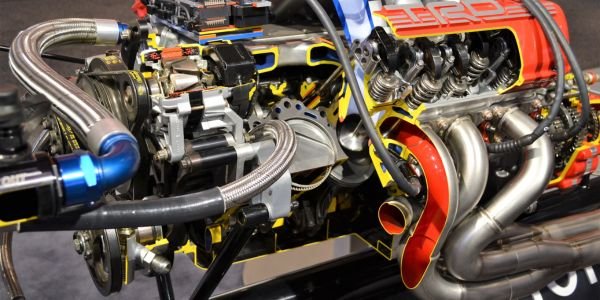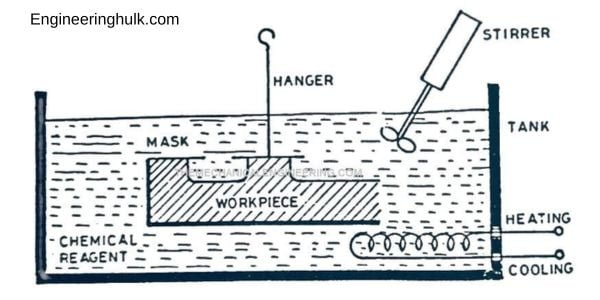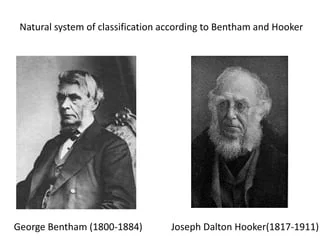Table of Contents
Bentham and hooker classification
For centuries, scientists have looked for order in the natural world. Long-established systems of taxonomy use classification to organize and identify species of plants or animals.
Two influential botanists, Joseph Dalton Hooker and George Bentham, developed a lauded system for classifying a wide range of plants – known as Bentham and Hooker’s Classification System.
In this blog post, we explore how this innovative system works and presents ideas as to how it can be applied in everyday life.
What is Bentham and Hooker’s Classification System?
Bentham and Hooker’s Classification System is a revolutionary system of plant taxonomy developed by two of the most influential botanists in history, Joseph Dalton Hooker and George Bentham.
This pioneering system was first published in 1883, providing an updated and comprehensive approach to classifying plants based on their unique characteristics.
The classification method groups plants into seven major divisions that are further divided into smaller groupings according to common morphological traits – such as flower shape or leaf arrangement.
This groundbreaking hierarchical structure has been widely adopted by scientists around the world for over a century and continues to be used today as one of the primary systems for identifying species of plants.
The genius behind Bentham and Hooker’s Classification System lies in its simplicity yet effectiveness; it provides an easy way for people from all walks of life to understand nature’s diversity even without any prior knowledge about botany or plant science.
By grouping plants into logical categories with just a few basic criteria, this innovative system allows individuals to quickly identify different types of flora at first glance – making it easier than ever before to appreciate all that nature has to offer!
How does the Classification System work?
The Bentham and Hooker Classification System works by grouping plants into seven major divisions based on their distinct characteristics. The system further divides each division into smaller groupings according to common morphological traits such as flower shape or leaf arrangement.

For example, in the “Monocotyledons” (or single-celled plants) division, there are various families that can be distinguished by features like petal count and seed arrangement. In addition, certain subgroups within each family can also be identified through other characteristics such as fruit type or stem structure.
This groundbreaking hierarchical structure makes it easy for people with little knowledge of plant science to quickly identify different types of flora at first glance – allowing individuals to appreciate nature’s diversity more than ever before!
By providing a simple yet effective way to classify species, Bentham and Hooker’s Classification System gives us an insight into how diverse life is on our planet – making it easier to marvel at the beauty of nature without getting lost in scientific jargon.
What are the benefits of the Classification System?
The Bentham and Hooker Classification System offer numerous benefits that make it one of the most widely adopted taxonomic systems in the world.
Firstly, this innovative system allows scientists to quickly identify plants with just a few basic criteria – eliminating time-consuming research into individual species. Secondly, it also provides an easy way for everyday people to understand nature’s diversity without requiring any prior knowledge about botany or plant science.
By grouping plants into logical categories based on their distinct characteristics, individuals can now easily recognize different types of flora at first glance – making it easier than ever before to appreciate all that nature has to offer!
Furthermore, the hierarchical structure of Bentham and Hooker’s Classification System also makes it useful for conservation efforts as well.
By providing a comprehensive overview of various species and their associated traits, researchers can more accurately analyze data when conducting environmental studies – allowing them to pinpoint areas where certain vegetation is threatened or endangered.
In addition, this system helps increase public awareness by giving people access to reliable information about different types of plants worldwide – enabling us all to become better stewards of our planet’s precious resources!
How can the Classification System be used in everyday life?
The Bentham and Hooker Classification System can be used in everyday life to easily identify different types of plants.

By grouping flora into logical categories based on their distinct characteristics, individuals can quickly recognize different species at first glance – making it easier than ever before to appreciate all that nature has to offer!
For instance, amateur gardeners can use this system when selecting flowers or shrubs for landscaping projects; by understanding the traits associated with each type of plant, they’ll have a better chance of getting the desired look and feel for their outdoor space.
Similarly, hikers and nature enthusiasts can also benefit from this classification system when exploring new areas – as they’ll be able to distinguish between various species of trees or wildflowers without having any prior knowledge about botany or plant science.
In addition to being useful for recreational activities, the Bentham and Hooker Classification System is also invaluable for scientific research purposes.
By providing a comprehensive overview of various species and their associated traits, researchers are able to more accurately analyze data when conducting environmental studies – allowing them to pinpoint areas where certain vegetation is threatened or endangered.
Furthermore, conservationists use this system as well since it helps them identify which plants should be protected due to their rarity or uniqueness in order to preserve biodiversity around the world!
All these uses make clear how important this taxonomic system is not just in academic circles but also within our daily lives – highlighting why it remains one of the most widely adopted classification systems today!
Conclusion
The Bentham and Hooker Classification System has revolutionized the way we view and appreciate nature.
By providing a simple yet effective way to classify plants, this innovative system gives us an insight into how diverse life is on our planet – making it easier than ever to marvel at nature’s beauty without getting lost in scientific jargon.
In addition, its hierarchical structure helps scientists accurately analyze data when conducting environmental studies and increase public awareness by giving people access to reliable information about different types of flora worldwide.
With all these benefits, it’s no wonder why Bentham and Hooker’s Classification System remains one of the most widely adopted taxonomic systems today!
From amateur gardeners selecting flowers for landscaping projects to conservationists preserving biodiversity around the world –
countless uses make clear why Bentham and Hooker’s Classification System is so invaluable in both everyday life and academic circles alike.
Its ability to quickly identify plants with just a few basic criteria has made classifying species easier than ever before – allowing individuals from all walks of life to gain knowledge about nature while also promoting more responsible stewardship of our planet’s precious resources!
Therefore, whether you’re looking for entertainment or education purposes, keep this revolutionary system in mind when exploring the wonders of plant science!
The Bentham and Hooker Classification System is an important part of the scientific process.
It is used to organize and classify biological organisms, as well as group them into distinct families. This allows for further examination of each species to understand the evolution and phylogeny of life on Earth, which gives us invaluable insight into understanding all aspects of the environment.
The use of this system holds immense utility in everyday life, helping us gain a better understanding our the natural resources around us.
Through properly utilizing this powerful tool, we can continue striving towards increased knowledge regarding our world and its inhabitants.































Comment on “Bentham and hooker classification”
Comments are closed.